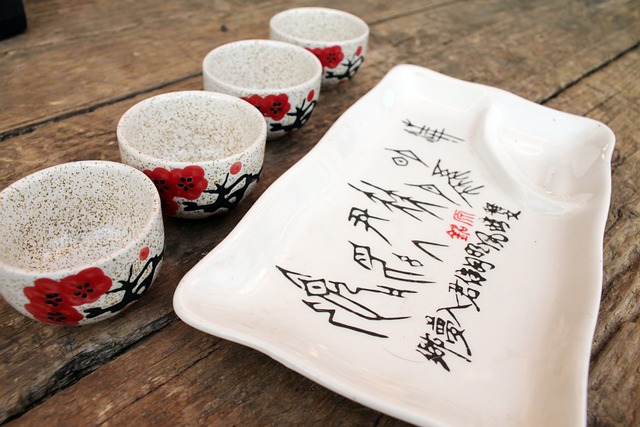From Chilled to Cozy: Exploring the Different Sake-Warming Techniques
Sake warming, known as ‘kanzake’ in Japan, is a traditional technique that brings out the rich flavors and aromas hidden within this esteemed beverage. This process isn’t merely about heating sake; it’s an art form steeped in cultural significance.Interestingly enough, sake wasn’t always served chilled. The custom of warming sake dates back to the 8th century. Back then, folks believed that warm sake could ward off evil spirits. Today we appreciate warmed sake for its ability to amplify flavors and offer a cozy drinking experience.This article provides tips on how to warm sake at home, how to pair it with food, and ways to appreciate the unique taste sensations that come with each sip.Why Warm Sake?Different types of sakes respond differently when heated due to their unique composition and brewing methods. Certain flavor notes become more pronounced while others recede into the background giving each variety its own characteristic profile when warmed.A bottle of premium Ginjo or Daiginjo might lose some of its nuanced flavors with heat exposure but robust Junmai-shu can truly shine at warmer temperatures. No definite regulations apply here – it’s all about what you like.The Science Behind ItSo what exactly happens during the warming process? In essence: chemistry. As you warm up your drink, volatile compounds like esters and alcohols start evaporating from your cup creating a bouquet full of distinct fragrances which stimulates our sense perception even before tasting.This chemical dance not only influences how we perceive taste but also how we experience the texture and mouthfeel of sake. The heat changes the viscosity, giving warmed sake a silkier feel on your palate.Warming sake is more than just tradition; it’s an exploration of a beverage’s depth and versatility. It’s about creating moments to savor – whether you’re sharing with friends or enjoying some alone time with your favorite cup of warm comfort.Understanding the Impact of Temperature on SakeThere are delicate techniques that come into play when you consider how to warm sake. The interplay between sake and temperature is a delicate dance. This relationship can either highlight or mask specific flavors, making each sip an adventure.A change in temperature doesn’t merely warm the sake; it transforms it. The way our taste buds perceive different flavor compounds changes with heat. For instance, warming sake tends to emphasize its savory (umami) elements while toning down any sharp acidic notes.Sweetness and bitterness are also impacted by warmth, becoming more prominent as temperatures rise. That’s why warmer sakes often come across as richer and fuller-bodied compared to their chilled counterparts.The Magic of Warmth: Highlighting ComplexityRaising the temperature of your sake does more than just enhance certain flavors – it reveals hidden depths within this complex beverage. As you gradually warm your glass, new layers unfold like chapters in a book.You may start noticing subtle aromas that were masked at cooler temperatures or find that once-dominant fruity notes have taken a backseat to robust earthy tones.Navigating Temperatures: Each Degree Matters
Cold serving (5°C-10°C): Best for aromatic types like Ginjo-shu and daiginjo-shu,Cool room temp (15°C): Suitable for Junmai-Shu & Honjozo-shu,Lukewarm (30°-40°C): Helps mellow out rough edges in full-bodied sakes,Warm (45°C-50°C): Enhances umami and masks acidity in rich, earthy sakes.
Each sake has its ‘sweet spot’ when it comes to temperature. Some are best enjoyed chilled, while others come alive with a bit of heat. The key is experimentation and personal preference.The Science Behind the HeatThere’s an actual science behind why warmth transforms sake. As mentioned earlier, our taste receptors respond differently to various compounds at different temperatures – that’s called thermally-induced taste change.How to Warm Sake at HomeSake warming is an art form that goes back centuries in Japan. The process can transform the flavors and aromas of this traditional drink, giving it more depth and complexity.Traditional Method: Tokkuri and ChokoThe most common way to warm sake at home involves using a ceramic carafe called a tokkuri. You pour your sake into the tokkuri, then place it in a pot of hot water for about 5 minutes. The key here is not to let the water boil because you don’t want to overheat the sake.After heating, serve your warmed sake in small cups known as choko. Remember, patience pays off; let your senses savor each sip’s nuanced flavor changes brought on by heat application.Avoid OverheatingTo maintain optimal flavor when warming up sake, avoid overheating above 55 degrees Celsius. Use a cooking thermometer if you have one handy. If the sake is too hot, it may lose its delicate flavors and aromas.So, with these simple steps at your disposal, why not transform your next quiet evening into an authentic Japanese dining experience? Remember: Warm sake isn’t just about raising the temperature; it’s also about elevating your appreciation for this time-honored beverage.Tips for Perfectly Warmed SakeGetting your sake to the perfect temperature isn’t rocket science, but it does need a little finesse. Here are some expert pointers to assist you in getting it just right.The Right TemperatureFor the best flavor, keep sake temperature between 104°F (40°C) and 122°F (50°C). This range allows the delicate flavors of sake to shine without causing any harshness or bitterness. Use a kitchen thermometer if possible – it’ll give you more control over your sake’s final taste.Avoid OverheatingOverheated sake can lose its unique characteristics and become flat in flavor. Make sure not to heat beyond our suggested maximum of 122°F (50°C). Maintain Optimal FlavorYour warmed sake will begin cooling immediately after being heated, so be ready to serve straight away. Serving in small cups will keep the drink at an optimal temperature longer than larger ones would allow.Sake School of America’s Certified Sake Adviser course offers comprehensive insights into such nuances for those interested in delving deeper.Serve with StyleIf you want an authentic experience, consider investing in traditional Japanese sakazuki cups or a porcelain carafe called toko-betsu-jōkki. These items aren’t just aesthetically pleasing; they’re designed specifically for enjoying warm sake.Experiment with Different Sake TypesLast but not least, have fun experimenting. Try warming different types of sake to see how their flavors change. Some will bloom beautifully at higher temperatures, while others might be more suited to a cooler serving.Pairing Warmed Sake with FoodSavoring warmed sake alongside food is a journey for the senses. The right pairings can bring out new depths in both the dish and the drink.Finding Balance in FlavorsA well-paired meal doesn’t let one taste dominate. Like a harmonious symphony, each flavor plays its part without drowning out others. It’s important to consider this when pairing sake with food.For example, if your dish features strong flavors like spicy or tangy ingredients, it’s best to choose a robustly flavored warm sake such as Junmai or Honjozo. This balance ensures that neither the food nor drink overpowers each other, resulting in an enjoyable dining experience.Paring Hearty Dishes with Warm SakeIn colder months, hearty dishes take center stage on our dinner tables. Try grilled fish and simmered vegetables or marinated salmon. These warming foods match perfectly with warm sake due to temperature levels that create similar comforting qualities.The Role of TextureThe texture is another element often overlooked when considering pairings. Bolder textured foods need bold drinks – smooth silky tofu goes hand-in-hand with creamy Nigori sakes while crispy tempura finds its mate in dry crisp Karakuchi-style sakes.This combination lets you appreciate how textures play off against each other between your chosen fare and sake.Don’t Forget DessertPairing warmed sake with dessert may seem unconventional, but it’s an adventure worth embarking on. Creamy desserts like panna cotta or cheesecake can be elevated by a warm Daiginjo-style sake with its fruity and floral notes.This is just the beginning of your food pairing journey. Each meal presents new opportunities to explore different combinations and find what suits your palate best.ConclusionSake warming, or ‘kanzake’ in Japan, is more than just a technique to heat up the beverage – it’s a cultural tradition steeped in significance. The process involves a delicate interplay between temperature, flavor profiles, and chemical reactions that can reveal hidden depths in the drink. Different types of sake respond differently to heat, and finding the perfect temperature range is key to experiencing the drink’s full potential. By exploring warmth as an element in sake consumption, one can gain a deeper appreciation for the process of brewing and consuming this time-honored beverage.





Comments